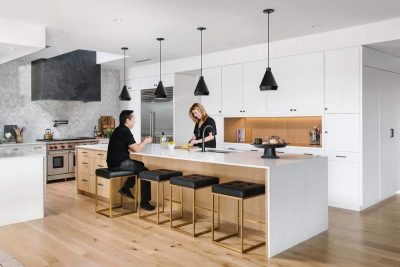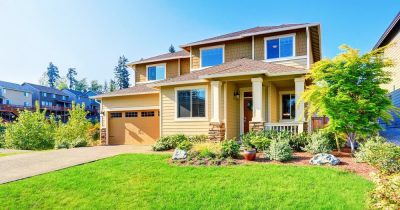
The true magic of a room lies not just in its layout or color scheme, but in the textures and textiles that breathe life into the space. Textiles are more than mere accessories; they are the soul of home decoration, offering a unique blend of functionality and aesthetic appeal. Understanding the power of textures and textiles in interior decoration is essential for creating inviting and stylish environments.
Creating Atmosphere with Textures
Textures play a crucial role in defining a room’s character. The interplay of different materials can transform a flat, uninspiring space into a dynamic and engaging environment. Smooth, glossy surfaces like silk or satin reflect light beautifully, adding a touch of elegance and sophistication. These materials are perfect for formal spaces such as living rooms and dining areas, where a bit of opulence can make a significant impact. On the other hand, matte and rough textures like burlap or coarse wool absorb light, creating a more grounded and rustic feel. These are ideal for informal spaces like kitchens or family rooms, where a relaxed, cozy vibe is desired. The tactile quality of these materials also contributes to the room’s comfort, making them inviting and warm.
Enhancing Comfort and Usability
The tactile experience of a room is just as important as its visual appeal. Soft and plush fabrics like velvet, faux fur, and chenille provide a sense of warmth and comfort, making them perfect for spaces designed for relaxation, such as bedrooms and lounges. These textures invite you to touch and feel, creating a sensory experience that enhances the overall ambiance of the room. In contrast, materials like leather and polished wood offer a cooler, smoother texture that can lend a sense of luxury and sophistication. These are ideal for creating a more formal or modern look, and their durability makes them suitable for high-traffic areas.
Balancing Textures for a Cohesive Look
Achieving a cohesive look while incorporating various textures requires a thoughtful approach. Start with a dominant texture that sets the tone for the room, such as a large rug or a piece of upholstered furniture. Then, layer in different textures to add depth and interest. For instance, pairing a knit throw with a linen sofa creates a lovely contrast that is both visually and tactilely appealing. Color coordination is key to ensuring that different textures blend seamlessly rather than clash. A harmonious color palette allows the textures to complement each other, enhancing the overall design rather than detracting from it. This careful balance can turn a simple room into a sophisticated and stylish space.
The Functional and Decorative Role of Textiles
Textiles serve both functional and decorative purposes in home decoration. Curtains, rugs, and cushions are not just decorative elements; they also contribute to the comfort and practicality of the space. For example, heavy drapes can provide insulation and privacy, while lightweight curtains can filter light beautifully. In addition to their functional benefits, textiles add a layer of personalization to your home. Decorative items like throw pillows, blankets, and fabric wall hangings can be easily updated to reflect seasonal changes or evolving design trends. This flexibility allows you to keep your decor fresh and current without major renovations.
Understanding Different Types of Textiles
Textiles are made from natural or synthetic fibers, or a combination of both. Natural textiles, such as cotton, linen, silk, and wool, are often softer and more resilient. Cotton is durable and versatile, making it ideal for families. Linen is tough yet prone to wrinkling, perfect for tablecloths and curtains. Silk is luxurious but requires careful maintenance, while wool provides warmth and durability. Synthetic fibers, such as polyester, nylon, and acrylic, offer alternatives that are often more durable and easier to maintain. Polyester, for instance, is strong and wrinkle-resistant, making it suitable for various applications from drapes to bed sheets.
Using Textures and Textiles Effectively
Good decorators know how to layer textures and textiles. While this can feel risky to new decorators, it often feels natural and adds depth to a room. Consider issues of weight, scale, color, and pattern when selecting textures. A consistent color palette helps disparate textures feel harmonious. For example, a living room decorated in a Southwest style (it is widespread in Arizona, Utah, Nevada, Texas, and New Mexico) might feature a short-weave patterned rug, a leather sofa, and straw-colored chairs, all within a beige, teal, and juniper color scheme. Alternatively, a room decorated in earthy greens might have a slate floor, a shag rug, and a cotton blend sofa with mismatched pillows.
Rooms lacking a variety of textures appear flat and uninspired. In contrast, a well-textured room feels dynamic and engaging. Area rugs, for instance, add both visual interest and tactile variety, drawing the eye and grounding the space. Similarly, layered window treatments, like sheer base curtains paired with heavier drapes, can transform the look and feel of a room.
Plants and flowers also add temporary texture, enhancing the decor with natural elements. Vases and pots made from various materials can house succulents, flowers, and grasses, adding texture and balancing other design elements.
Conclusion
The power of textures and textiles in interior decoration is undeniable. They are essential tools for creating a welcoming, comfortable, and stylish environment. By thoughtfully selecting and combining different materials, you can transform any space into a true reflection of your personality and taste. Whether you aim for a serene sanctuary or a vibrant living area, the right textures and textiles will help you achieve your vision, enhancing both the beauty and functionality of your home.









